- News
- Reviews
- Bikes
- Components
- Bar tape & grips
- Bottom brackets
- Brake & gear cables
- Brake & STI levers
- Brake pads & spares
- Brakes
- Cassettes & freewheels
- Chains
- Chainsets & chainrings
- Derailleurs - front
- Derailleurs - rear
- Forks
- Gear levers & shifters
- Groupsets
- Handlebars & extensions
- Headsets
- Hubs
- Inner tubes
- Pedals
- Quick releases & skewers
- Saddles
- Seatposts
- Stems
- Wheels
- Tyres
- Tubeless valves
- Accessories
- Accessories - misc
- Computer mounts
- Bags
- Bar ends
- Bike bags & cases
- Bottle cages
- Bottles
- Cameras
- Car racks
- Child seats
- Computers
- Glasses
- GPS units
- Helmets
- Lights - front
- Lights - rear
- Lights - sets
- Locks
- Mirrors
- Mudguards
- Racks
- Pumps & CO2 inflators
- Puncture kits
- Reflectives
- Smart watches
- Stands and racks
- Trailers
- Clothing
- Health, fitness and nutrition
- Tools and workshop
- Miscellaneous
- Buyers Guides
- Features
- Forum
- Recommends
- Podcast
review
 2022 Fuji Touring Disc - riding 1.jpg
2022 Fuji Touring Disc - riding 1.jpg£1,199.99
VERDICT:
Classic steel tourer for anyone wanting to load up, sit up and enjoy the ride – after changing the tyres...
Ready to ride
Old-school features
Understated design
Average tyres
Basic saddle
Wheels aren't tubeless ready
Bar-end shifters won't appeal to everyone
Weight:
13,220g
Contact:
At road.cc every product is thoroughly tested for as long as it takes to get a proper insight into how well it works. Our reviewers are experienced cyclists that we trust to be objective. While we strive to ensure that opinions expressed are backed up by facts, reviews are by their nature an informed opinion, not a definitive verdict. We don't intentionally try to break anything (except locks) but we do try to look for weak points in any design. The overall score is not just an average of the other scores: it reflects both a product's function and value – with value determined by how a product compares with items of similar spec, quality, and price.
What the road.cc scores meanGood scores are more common than bad, because fortunately good products are more common than bad.
- Exceptional
- Excellent
- Very Good
- Good
- Quite good
- Average
- Not so good
- Poor
- Bad
- Appalling
Fuji's Touring Disc is a good entry-level tourer, ideal for anyone wanting to load panniers and explore in the good old-fashioned way. The price limits the quality of some of the finishing kit, and the bar-end shifters won't be for everyone, but it's eminently upgradeable.
Bar-end shifters, triple chainset, external cabling... I was pretty young when I last saw a new bike kitted out like this. The disc brakes might be considered a little more modern, but let's not get carried away – they are cable actuated.
> Buy now: Fuji Touring Disc 2022 from Wiggle for £1199.99
While many two-wheel travellers are strapping baggage to the frame, handlebar and seatpost, there are some out there who still prefer a sturdy rack, front and back, for panniers packed with sufficient kit for lengthy stints on the road. With a multitude of mounts and a rear rack already fitted, it's possible to get a lot of stuff on this frame – bottle cages, kit cages, and a front rack.
The ride
I've stuck mostly to paved roads while testing the Fuji Touring Disc, with occasional detours along towpaths, fire tracks and muddy tracks. It's a workhorse of a bike, and the steel frame is doing its fair share to make long days on the road a comfortable affair.
On the road the handling is stable, the steering predictable when fully loaded, and it feels safe descending and cornering.
The triple chainset is much appreciated on climbs, and while I rarely got out of the saddle it was reassuringly stable if I did. It handles just how you would want a touring bike to handle. It's in no way exciting, but that's not what it's meant to be – this isn't a lightweight, race-orientated bike, it's a steel tourer.
It wasn't hard to find a good, upright position, one that helped me switch into 'touring mode' – easy pedalling (or freewheeling if at all possible), and watching the world go by. No achy back, no stiff shoulders, just mile after mile of easy spinning. The Fuji made me feel like a real old-school tourer, and its styling is pleasing to the eye for anyone who's owned a 'real' touring bike.
It's aimed squarely at road touring, but who hasn't ended up off-road at some point during a tour? It's good to know that a bike can handle such (mis)adventures, but sadly the Vitorria Randonneur tyres on the Fuji aren't really up to this; they're not even that good on the road. They limit performance and comfort on all rougher surfaces, and in wet conditions.
Swapping to something of better quality vastly improves the ride on all terrains and in all conditions. That said, while you can change the tyres easily enough you still won't get the versatility that tubeless would offer. To my mind, tubeless-ready wheels would have been a really good selling point, without serious impact on the price.
The Touring Disc isn't limited to what its name suggests, either; it also handled the occasional commute and several trips to the shops, and would make for a good audax or, at a push, sportive bike too. All of which will be achieved more efficiently and comfortably with a change of tyres.
Frame and fork
The frame is made from double-butted, heat-treated Reynolds 520 chromoly (chrome-molybdenum) steel, a replacement of Reynolds' original 531 (a manganese-molybdenum steel) boasting the equivalent durability and similar mechanical properties. It has a degree of flex and the ability to damp vibrations from our increasingly pot-holed lanes.
The chromoly fork features rack and mudguard mounts, and you could also fit cages on the fork legs. There's plenty of clearance with the supplied 35mm tyres to fit mudguards.
Bottle cages can be mounted in three different spots: standard down tube and seat tube positions, and on the underside of the down tube. A chain hanger and pump peg have also been added to the frame.
The bike is available in seven sizes: XS (49cm), S (52cm), M (54cm), L (56cm), XL (58cm), XXL (61cm), and XXXL (64cm). Full details of the exact geometry can be found on Fuji's site.
Fuji has used classic endurance geometry – a taller head tube and longer chainstays than a typical road bike, for an upright riding position and increased stability. I managed to get a riding position on the 54 test frame that really suited me (I'm just over 5ft 8in), and long days in the saddle, one after the other, didn't taken their toll on my body.
It's worth noting that Fuji has been making its Touring Disc for a few years now and changes the colour each year to distinguish from previous models.
Groupset
Aside from a KMC chain it's Shimano Deore throughout for the drivetrain. It's decent value and does the job – reliable and durable.
The triple chainset with 48/36/26-tooth rings paired with an 11-36T 10-speed cassette gives a decent range of gears, plenty enough for a loaded bike on rolling roads. I certainly appreciated the last-resort 26x36 for the more brutal climbs during testing.
So, what about the bar-end shifters? While it felt quite odd at first, and certainly took some getting used to, I quite enjoyed the movement down to the bar end; they are well placed and after a short while it becomes more of a reflex action.
The rear shifter is indexed, the front a friction shifter – I found myself making plenty of micro-adjustments here. Changing isn't as crisp or clean as with STI levers, but it was one hundred per cent reliable while testing.
They are also easy to adjust and maintain, and undeniably durable. And should the indexing stop working, or they go out of adjustment, you can use them in friction mode and keep on riding. Not that I've ever had an issue with an STI lever during a tour, other than a broken cable – and that's a hefty number of tours over 10 years.
Any experienced tourer will acknowledge that gear changing doesn't happen so often on a long tour, anyway; you tend to find your rhythm and tap away, so sudden changes aren't especially crucial. That said, touring on our own shores is definitely more demanding on the gears than it can be further afield. I've toured in Morocco, Greece, Albania and France and all have encompassed very long sections without a gear change. Testing in the Cotswolds and Shropshire has been more of a challenge; certainly, turning left to be faced with a wall that requires a very different gear to the one you are in isn't such a breeze with bar-end shifters.
Brakes
The TRP Spyre disc brakes are a welcome touch of modernity on this touring bike. A weighted bike can really run away with you, and disc brakes are going to spare rims as well as your hand muscles.
I found these TRPs to be consistent in all weather conditions, with smooth progression and decent control. The mechanical aspect means you are in a better position to address any failings out on the road than you would be with a hydraulic setup, too.
I found the RRL brake levers well-shaped and the small hoods suited my hands, though I'm not sure how comfortable they will be for those of you with larger hands.
Wheels and tyres
The wheels are built with 36 spokes in anticipation of heavy loads, with Shimano Deore hubs. The Alex double wall rims are double eyeleted, all adding to the wheel's durability. There is no reason why these shouldn't keep going for several thousand kilometres.
I've mentioned the Vittoria Randonneur tyres already; they offer nylon puncture protection and a tread very much suited to road riding. I've not had a single puncture to date, and that's with several forays off-road. Admittedly, this can sometimes just be down to luck, and they are already showing signs of wear, despite not having done a huge number of miles.
I found them sub-standard on anything other than dry roads, with or without a load. They certainly roll better when the bike is loaded, but lack versatility, zip and give.
It's hardly a drama to change them for something more reliable, potentially wider (the bike will take up to 40mm without mudguards, 38mm with) and with a better tread to handle those unexpected gravel encounters, so I won't get too hung up on their shortcomings.
Finishing kit
As with the tyres, some of the finishing kit seems very much 'to budget'. The 6061 alloy seatpost is pretty basic but does the job, and atop this is a Selle Royal Vivo saddle which I removed after my first outing; I really didn't get on with the wide, padded form.
Saddles are subjective, and easy enough to change. However, the finishing on this was particularly unimpressive too; maybe just a one-off manufacturing fault but I'm not sure anyone could be comfy with that ridge around the nose.
The Oval Concepts 310 Ergo drop handlebar, made from 6061 aluminium alloy, is well-shaped and the flatter tops welcome on long days. The drops are 133mm, and it has a 4-degree sweep. The 54 came with a 420mm bar, which I found spot on, not only for my personal position and handling, but also for mounting an Ortlieb bar bag without feeling cramped. Some might want more width (the 56 is fitted with a 440mm bar.) The Oval Concepts 300 suede bar tape gives a clean finish and offers decent grip and padding.
The bike comes fitted with an alloy rack, a huge bonus given how hard it can sometimes be to find racks to fit bikes these days. I'd prefer something with a wider top, creating more of a platform for bungee-ing kit over the top of panniers, but capable of carrying a 25kg load it's still up to the job.
The supplied bungees didn't impress hugely – they are already losing stretch, and I wouldn't trust them to hold anything securely on bumpy roads now.
Value
A steel tourer for less than £1,200 seems very good value on the face of it, but there are compromises that might force you to end up spending a bit more if you want it to be versatile enough for a decent tour.
The latest Spa Cycles Wayfarer (Neil tested the 2020 model) has an RRP of £1,375, but comes with handbuilt wheels and 9-speed Shimano Sora STI shifters.
> Buyer’s Guide: 16 of the best touring bikes
Up from £1,900 when Simon tested it last year to £2,200, Surly's Disc Trucker certainly makes Fuji's look great value, though it does come with tubeless compatible wheels and STI levers again.
Kona's Sutra SE is much closer in spec terms to the Fuji, and has an RRP of £1,599.
Conclusion
The Fuji Touring Disc is certainly worth considering if you are keen to rack up touring miles on the road, though I'd recommend you swap the tyres straight away to make for a better ride.
Verdict
Classic steel tourer for anyone wanting to load up, sit up and enjoy the ride – after changing the tyres...
road.cc test report
Make and model: Fuji Touring Disc
Size tested: Medium, 54cm
About the bike
List the components used to build up the bike.
Frame: Reynolds 520 chromoly, rack & fender mounts, pump peg & chain hanger
Fork: Chromoly, rack and fender mounts
Crankset: Shimano Deore, 48/36/26T
Bottom Bracket: Shimano sealed cartridge bearing
Pedals: Touring w/ clips & strap (no review comment as I didn't get these)
Front Derailleur: Shimano Deore, 28.6mm clamp
Rear Derailleur: Shimano Deore T6000
Shifters: Microshift bar-end
Cassette: Shimano Deore, 11-36T, 10-speed
Wheelset: Alex double wall, 36h, Shimano centerlock disc hubs
Tyres: Vittoria Randonneur, 700 x 35c
Brakes: TRP Spyre C mechanical disc, flat mount, 160mm centerlock rotors
Brake Levers: TRP RRL, linear pull
Headset: FSA, 1 1/8", sealed
Handlebar: Oval Concepts 310 Ergo, 6061 alloy, 31.8mm clamp, 133mm drop, 4° sweep
Stem: 3D-forged 6061, +/-6°
Tape: Oval Concepts 300 bar tape, suede
Saddle: Selle Royal Vivo
Seatpost: 6061 alloy, 27.2mm diameter
Rear Rack: Fuji Alloy with Strap
Tell us what the bike is for and who it's aimed at. What do the manufacturers say about it? How does that compare to your own feelings about the bike?
Fuji says, 'With geometry that's perfect for multiple long days in the saddle and carrying a heavy load to your destination, the Touring is Fuji's classic steel touring bike. If you're looking for a reliable and comfortable workhorse that can take you cross country, across your state or across town the Touring is the bike for you.'
Where does this model sit in the range? Tell us briefly about the cheaper options and the more expensive options
The non-disc, flat bar Touring Ltd is slightly cheaper, £1,049.99.
Frame and fork
Overall rating for frame and fork
8/10
Tell us about the build quality and finish of the frame and fork?
A quality build and seemingly durable finish.
Tell us about the materials used in the frame and fork?
Reynolds 520 butted chromoly steel frame. Chromoly fork.
Tell us about the geometry of the frame and fork?
The 54 I tested put me in a very upright position with my weight sufficiently far forward to not be needing to shunt forward on climbs (73 degree seatpost angle).
How was the bike in terms of height and reach? How did it compare to other bikes of the same stated size?
I found it just right for my 5ft 8in height. There are plenty of spacers that could be removed if you want to lower the handlebar a little.
Riding the bike
Was the bike comfortable to ride? Tell us how you felt about the ride quality.
Comfortable enough on smooth roads, but a change of tyres required for anything remotely resembling gravel, towpaths included.
Did the bike feel stiff in the right places? Did any part of the bike feel too stiff or too flexible?
Yes, even when loaded up.
How did the bike transfer power? Did it feel efficient?
It's not its forte – 13+kg and some sub-standard tyres need to get up to speed.
Was there any toe-clip overlap with the front wheel? If so was it a problem?
No issues here.
How would you describe the steering? Was it lively neutral or unresponsive? Neutral.
Tell us some more about the handling. How did the bike feel overall? Did it do particular things well or badly?
Stable and steady.
Which components had the most effect (good or bad) on the bike's comfort? would you recommend any changes?
I'd be changing the tyres and saddle.
Which components had the most effect (good or bad) on the bike's efficiency? would you recommend any changes?
The tyres hampered its efficiency.
Rate the bike for efficiency of power transfer:
6/10
Out of the box, not great, but different tyres made a noticeable improvement.
Rate the bike for acceleration:
5/10
It's a steel tourer....
Rate the bike for sprinting:
5/10
It's a steel tourer....
Rate the bike for high speed stability:
9/10
The only high speeds were on descents. It's very stable in this case.
Rate the bike for cruising speed stability:
9/10
Long wheelbase helps here – very stable.
Rate the bike for low speed stability:
7/10
Rate the bike for flat cornering:
8/10
Steady.
Rate the bike for cornering on descents:
8/10
Predictable.
Rate the bike for climbing:
5/10
With the Vittoria Randonneur tyres fitted it wasn't great (hence the rating), but a change of tyres massively improved things. Low gears are a bonus.
The drivetrain
Rate the drivetrain for performance:
8/10
No issues while testing.
Rate the drivetrain for durability:
8/10
My experience of Shimano is that it can keep on going, and going....
Rate the drivetrain for weight:
5/10
Rate the drivetrain for value:
7/10
Tell us some more about the drivetrain. Anything you particularly did or didn't like? Any components which didn't work well together?
No issues – the gearing was just right for me.
Wheels and tyres
Rate the wheels for performance:
7/10
Unremarkable but solid.
Rate the wheels for durability:
8/10
Rate the wheels for weight:
5/10
Rate the wheels for comfort:
6/10
Fit them with wider, higher quality tyres and it'll be a more comfortable ride.
Tell us some more about the wheels.Did they work well in the conditions you encountered? Would you change the wheels? If so what for?
I'd like to see tubeless compatible wheels really.
Rate the tyres for performance:
4/10
Rate the tyres for durability:
5/10
Showing signs of wear already.
Rate the tyres for weight:
5/10
They're a claimed 640g, so a fair bit of weight to spin round.
Rate the tyres for comfort:
4/10
Rate the tyres for value:
4/10
Tell us some more about the tyres. Did they work well in the conditions you encountered? Would you change the tyres? If so what for?
Not good in the wet, not good on rough surfaces – easily deflected on gravel. Not good on muddy towpaths.
Controls
Rate the controls for performance:
7/10
All sufficient for a loaded bike. They seem suitable choices for the purpose of the bike.
Rate the controls for durability:
7/10
No issues during testing.
Rate the controls for weight:
5/10
It's hardly about weight, more durability and reliability.
Rate the controls for comfort:
9/10
Perfectly good enough for long days on the road.
Rate the controls for value:
7/10
Tell us some more about the controls. Any particularly good or bad components? How would the controls work for larger or smaller riders?
I really liked the handlebar. The brakes were perfectly good enough for a loaded bike in any conditions.
Anything else you want to say about the componentry? Comment on any other components (good or bad)
The tyres are a let-down, and I didn't get on with the saddle. Having a rack fitted is great; some (optional) mudguards would be good too.
Your summary
Did you enjoy riding the bike? Yes
Would you consider buying the bike? Unlikely
Would you recommend the bike to a friend? Yes, with a warning about the saddle and tyres.
How does the price compare to that of similar bikes in the market, including ones recently tested on road.cc?
It compares really well. Surly's Disc Trucker is £2,200, Spa Cycles' latest Wayfarer is £1,375 and Genesis's Tour de Fer 10 https://www.genesisbikes.co.uk/genesis-tour-de-fer-10-vargn21410 is £1,399.99. All of these use STI levers, though.
Rate the bike overall for performance:
7/10
Rate the bike overall for value:
6/10
Use this box to explain your overall score
If you are willing to swap the tyres and saddle, you'll have a reliable road touring bike that should keep going for years. For hardened tourists who like to stick to paved roads, sit up and enjoy the ride, it's a sound choice.
About the tester
Age: 42
I usually ride: Road My best bike is: Carbon road.
I've been riding for: Over 20 years I ride: Most days I would class myself as: Expert
I regularly do the following types of riding: commuting, touring, club rides, general fitness riding, Getting to grips with off roading too!
Emma’s first encounters with a road bike were in between swimming and running. Soon after competing for GB in the World Age Group Triathlon Championships in Edmonton in 2001 she saw the light and decided to focus on cycling.
After a couple of half decent UK road seasons racing for Leisure Lakes, she went out to Belgium to sample the racing there and spent two years with Lotto-Belisol Ladies team, racing alongside the likes of Sara Carrigan, Grace Verbeke, Rochelle Gilmore and Lizzie Deignan. Emma moved from Lotto-Belisol to Dutch team Redsun, then a new Belgian team of primarily developing riders, where there was less pressure, an opportunity to share her experience and help build a whole new team; a nice way to spend her final years of professional racing.
Since retiring Emma has returned to teaching. When not coercing kids to do maths, she is invariably out on two wheels. In addition to the daily commute, Emma still enjoys getting out on her road bike and having her legs ripped off on the local club rides and chain gangs. She has also developed an addiction to touring, with destinations including Iceland, Georgia and Albania, to mention just a few. There have also been rare sightings of Emma off-road on a mountain bike…
Latest Comments
- Rendel Harris 23 min 10 sec ago
I couldn't agree more, but you'll be pleased to know that from next month HMRC are shutting that loophole and double cab/extended cab pickups will...
- sigirides 47 min 53 sec ago
Perfectly reasonable bike for running around town or commuting on, y'all just sound old. Think about how it used to be with hot rods... this is...
- David9694 1 hour 38 sec ago
Man rescued from crashed car by emergency service in Frinton...
- quiff 1 hour 2 min ago
Just make sure you get the units right when ordering.
- Rendel Harris 1 hour 2 min ago
Rice cakes are surely far posher than jelly babies?
- David9694 3 hours 13 min ago
The flashing blue lights were in my eyes
- chrisonabike 3 hours 43 min ago
Not clothing but haven't there have been a couple of spiked wing mirrors shown here? And the poster who's added some plastic pipe to their bike...
- Hirsute 7 hours 6 min ago
When you submit, it tells you to read the FAQs....
- llm 7 hours 50 min ago
How awful for the owners, this will have an ongoing cost while they restock, devastating for a small business. I think I would have some saved...
- Newhey cyclist 7 hours 59 min ago
For a few years now, I have been reporting cycling incidents from my commute to Operation Snap (Greater Manchester Police). Most are for close...
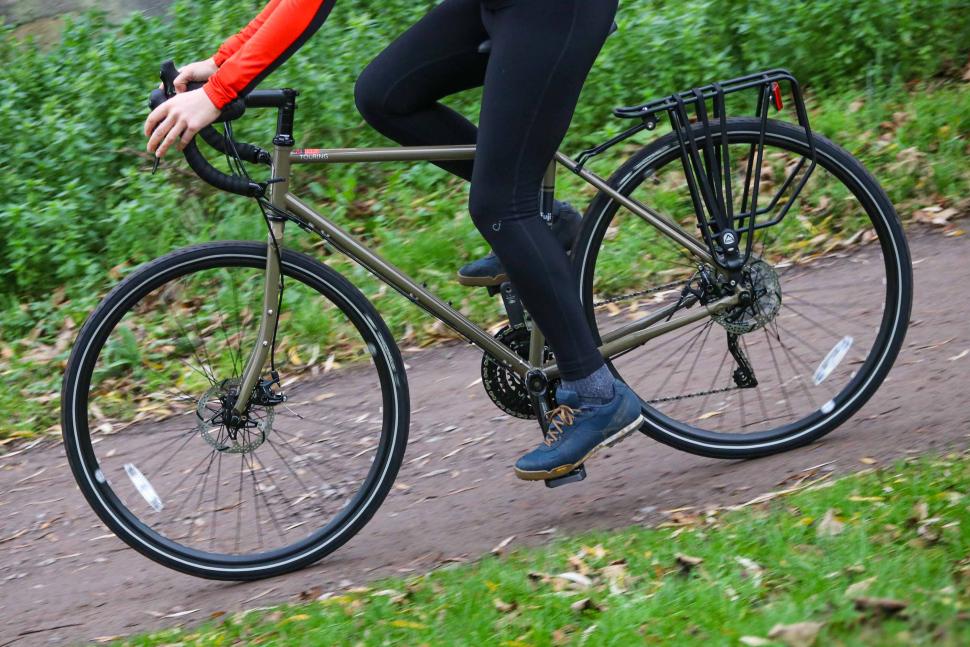



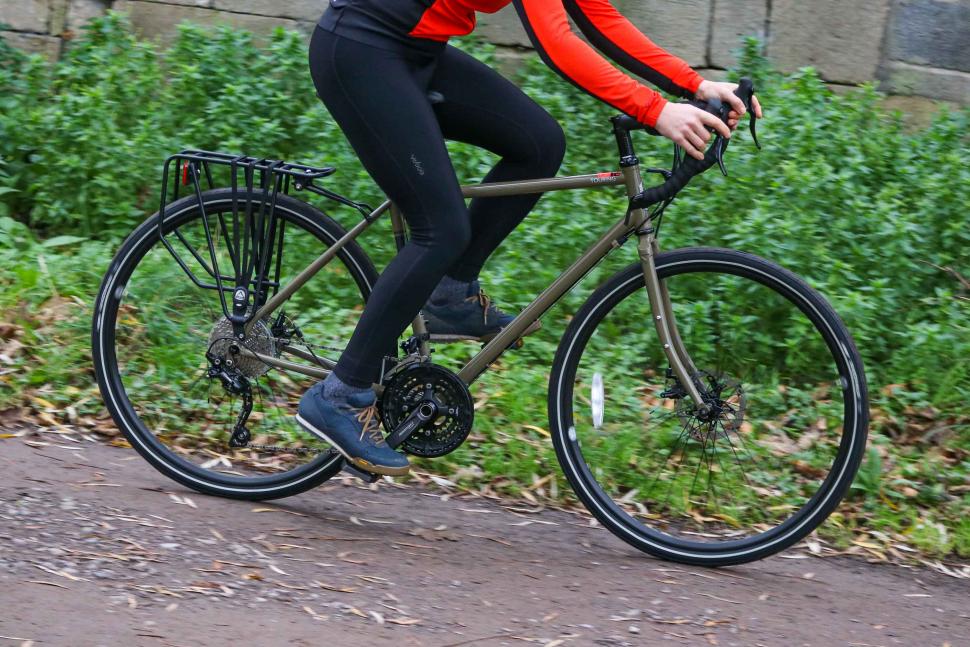
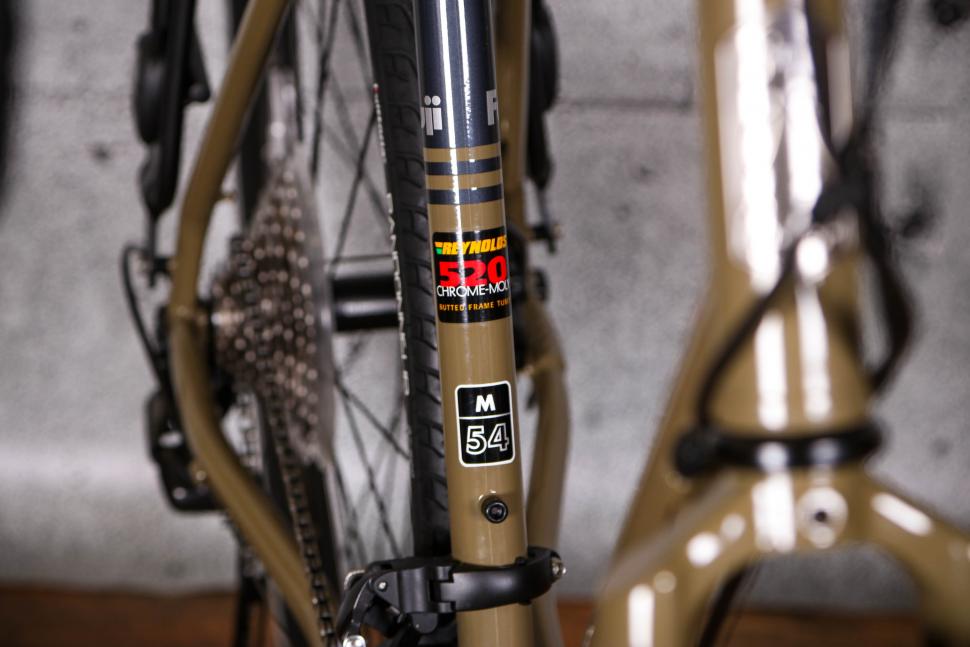
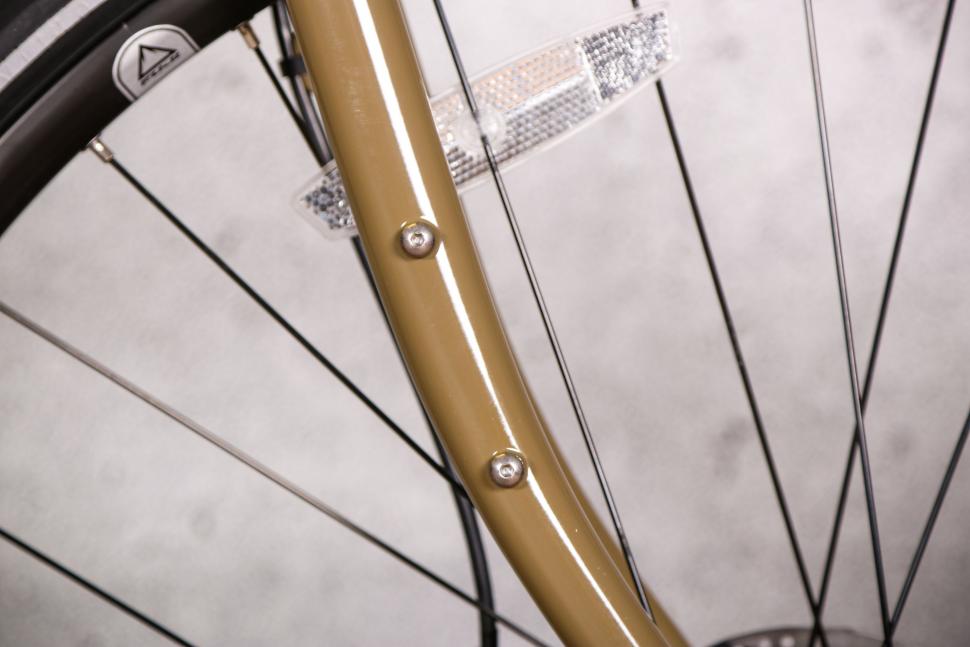














































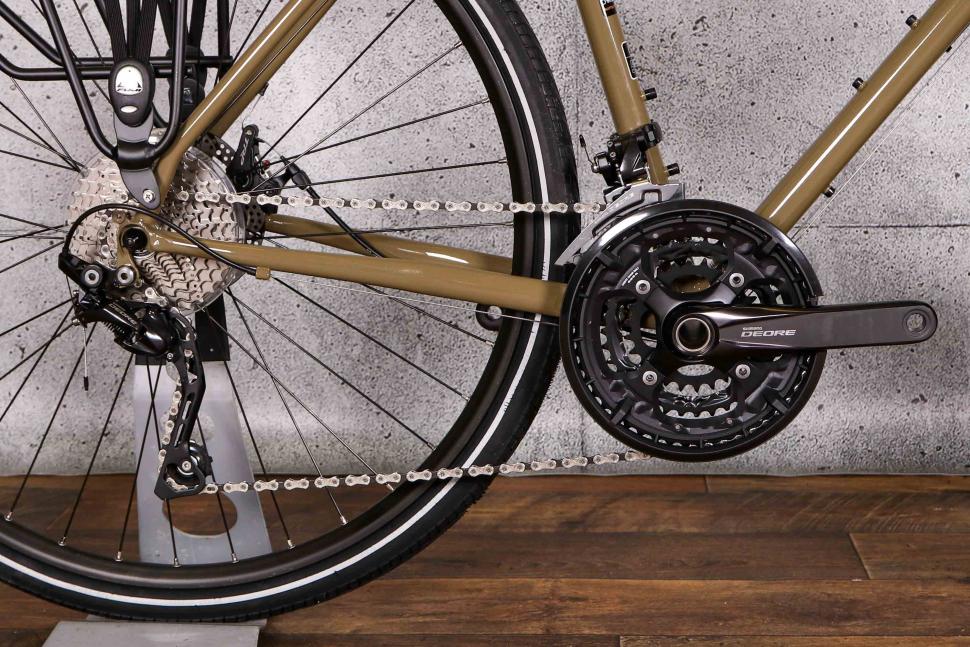
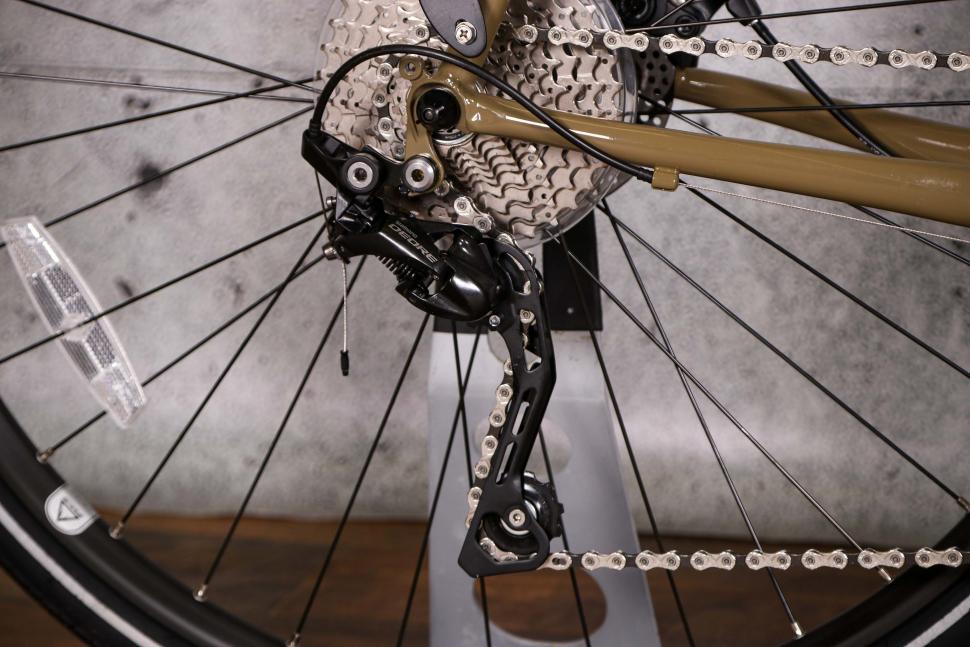

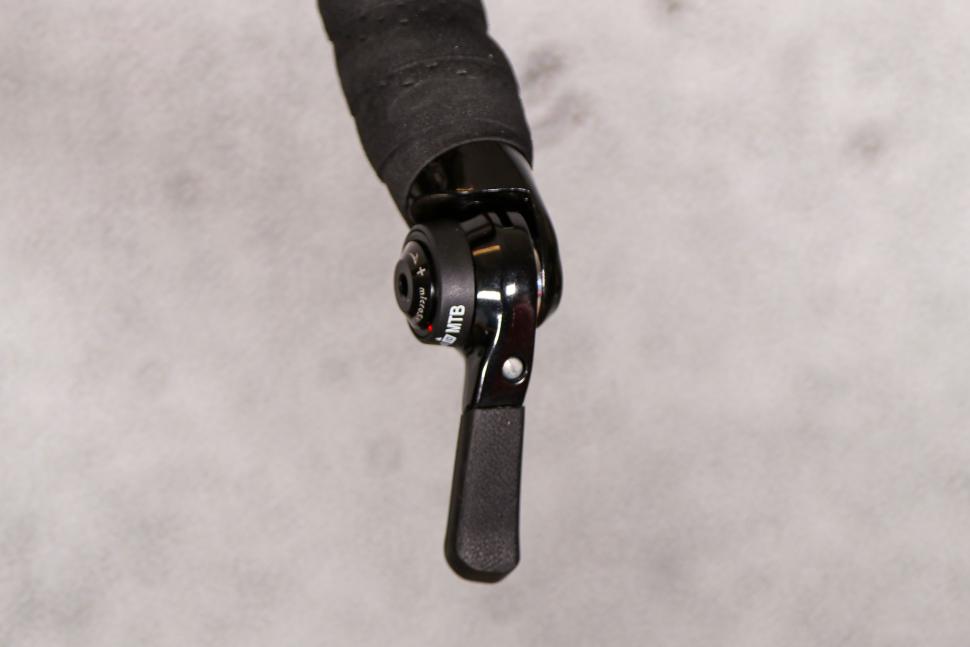
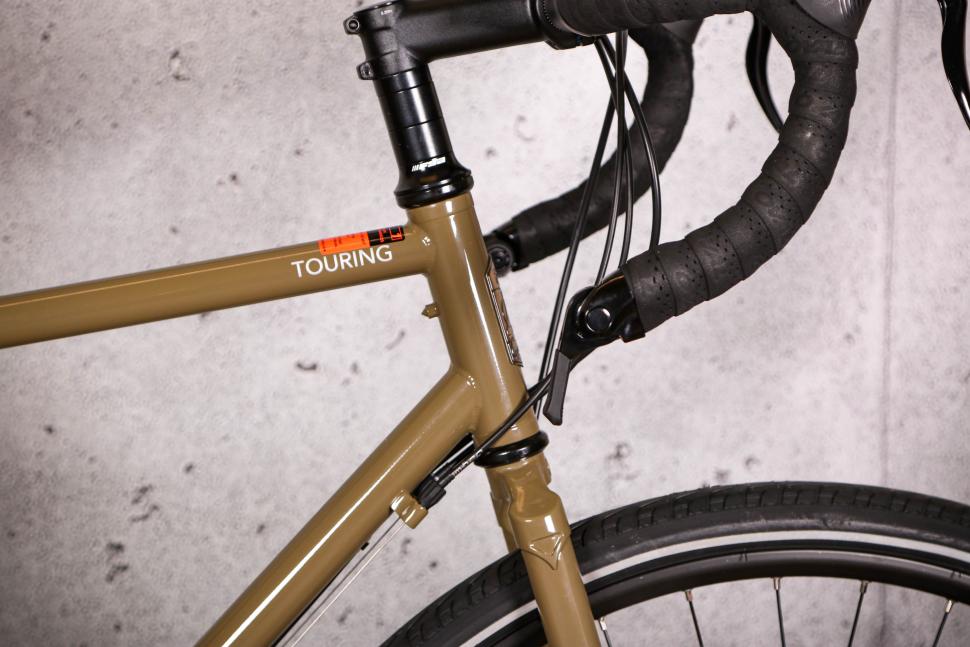
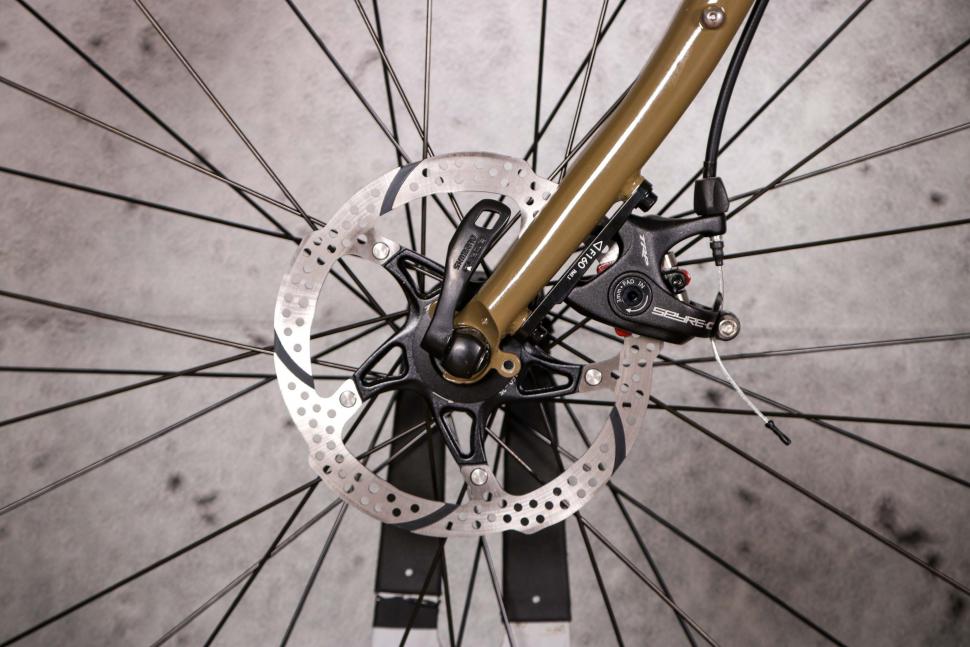

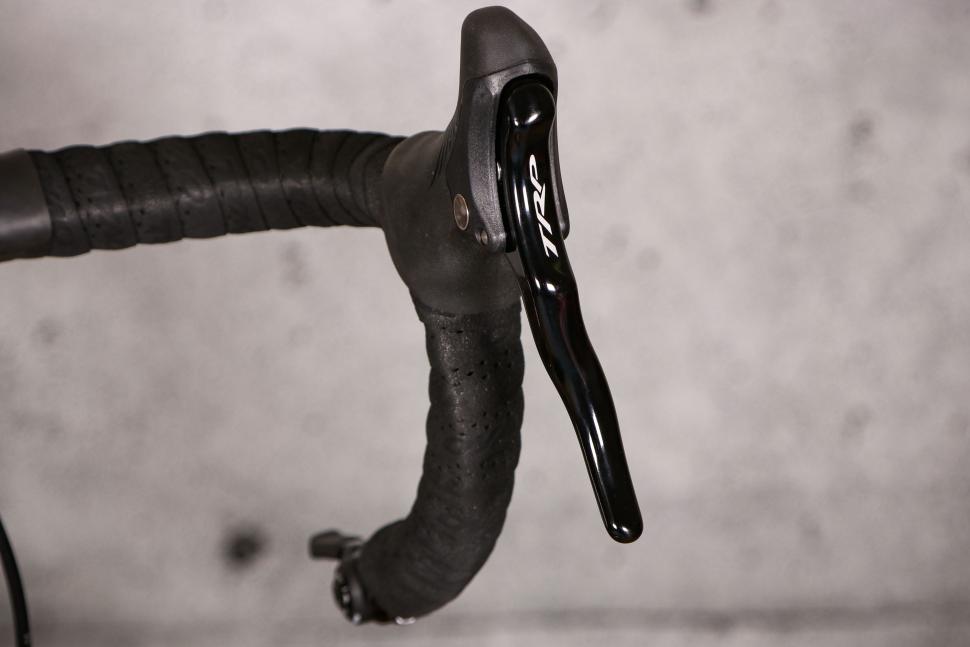

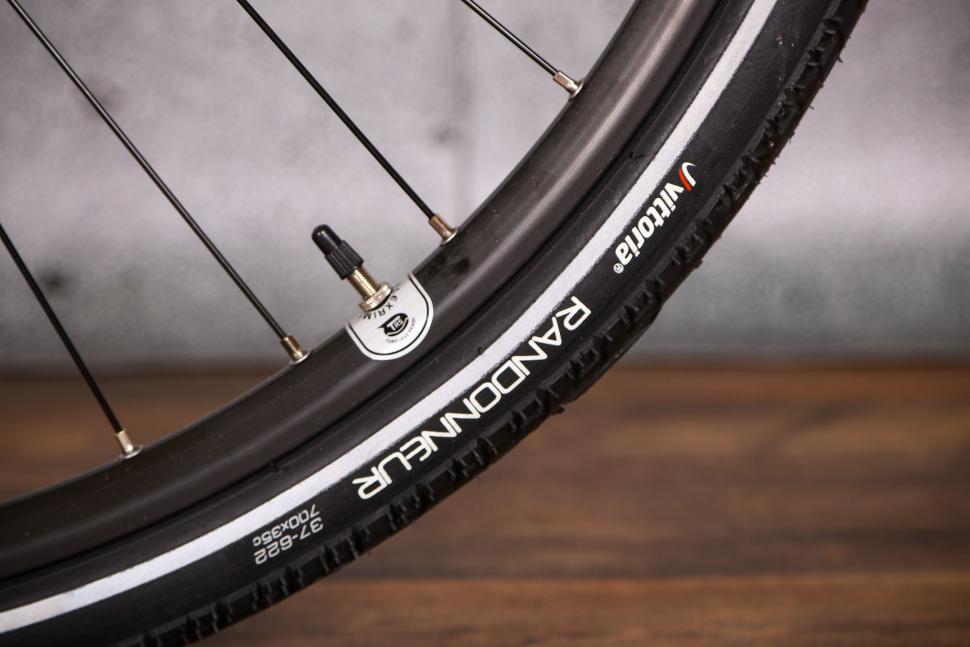
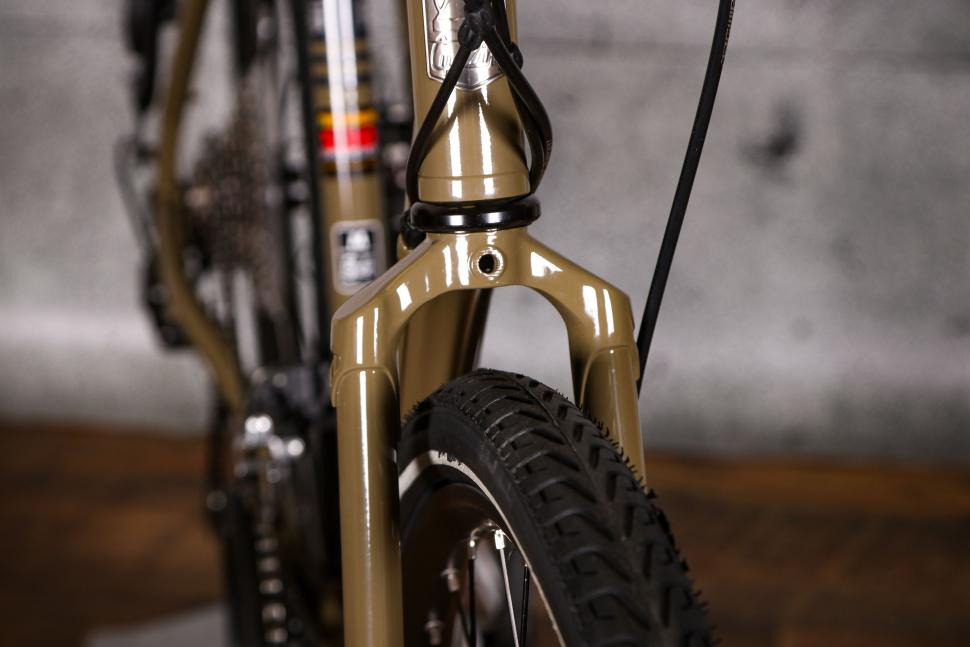
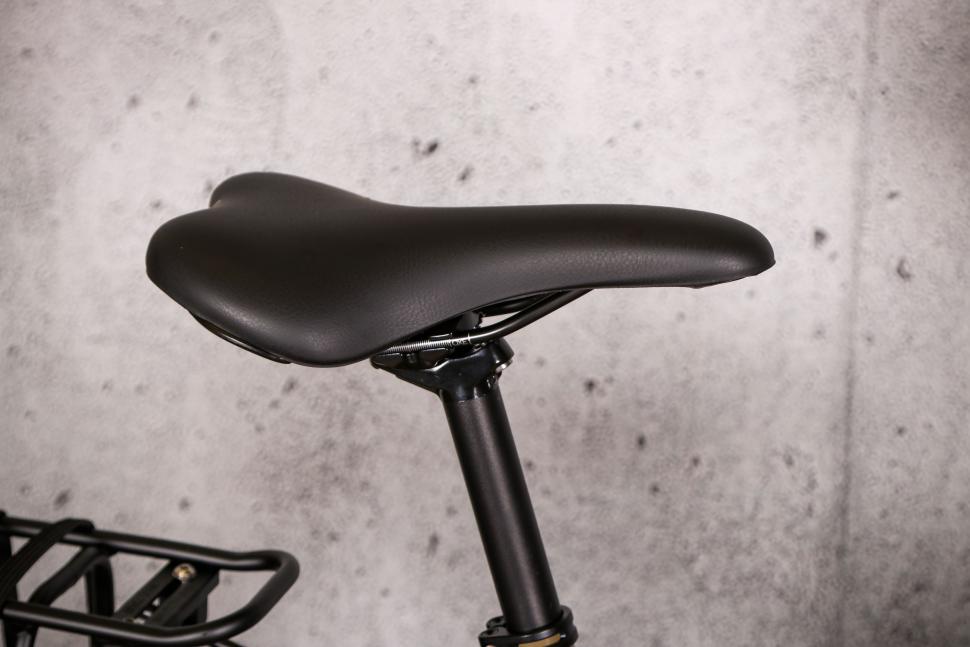

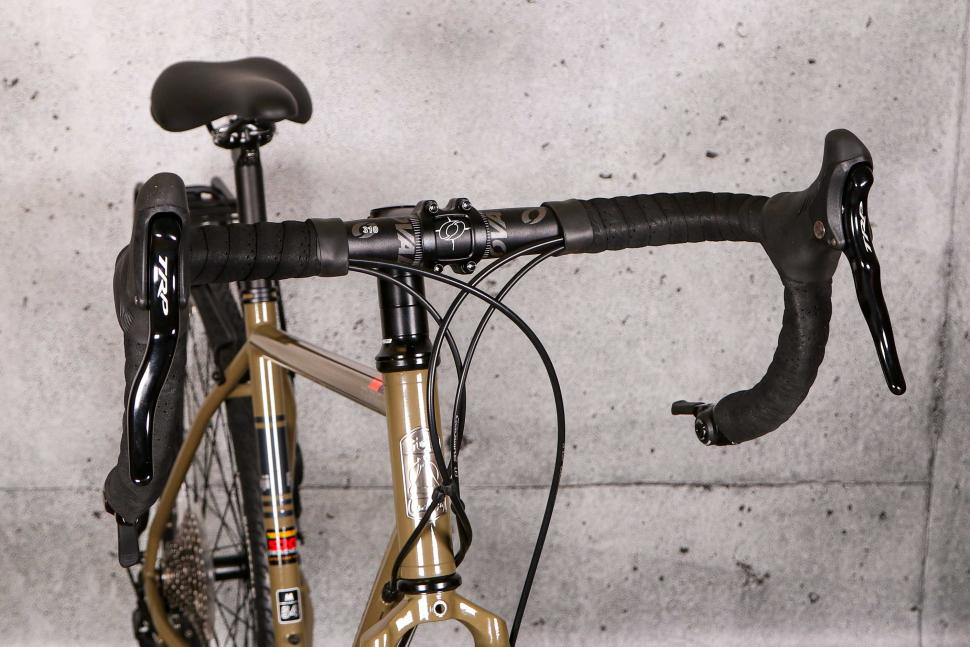


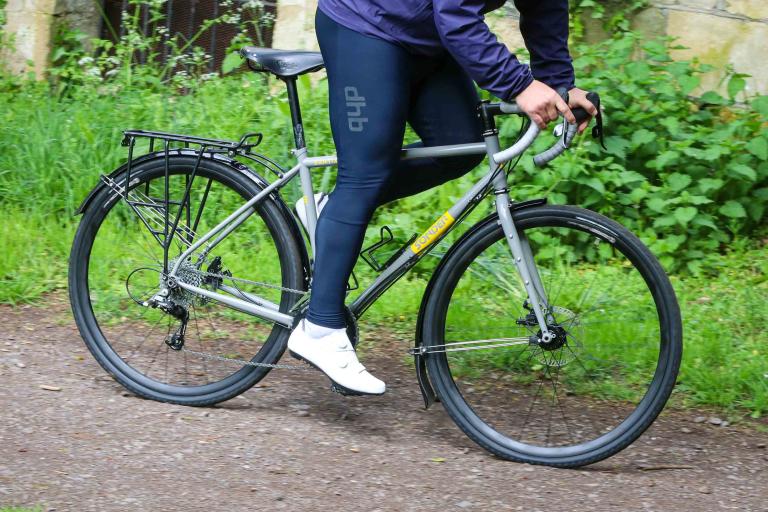
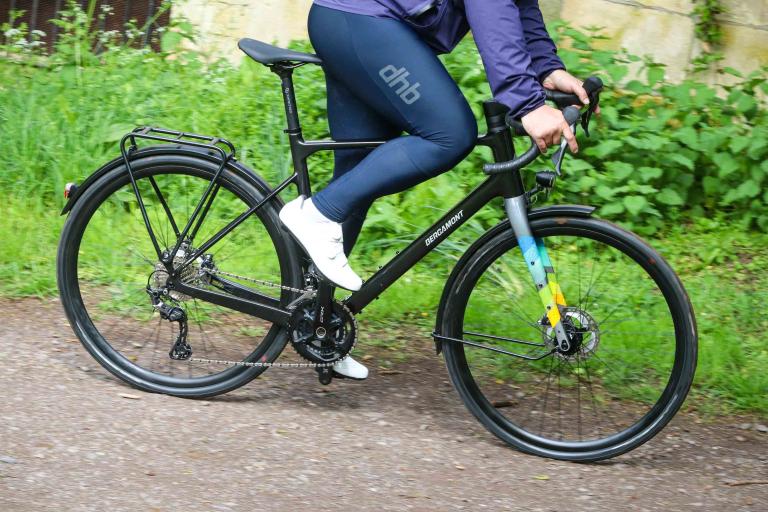
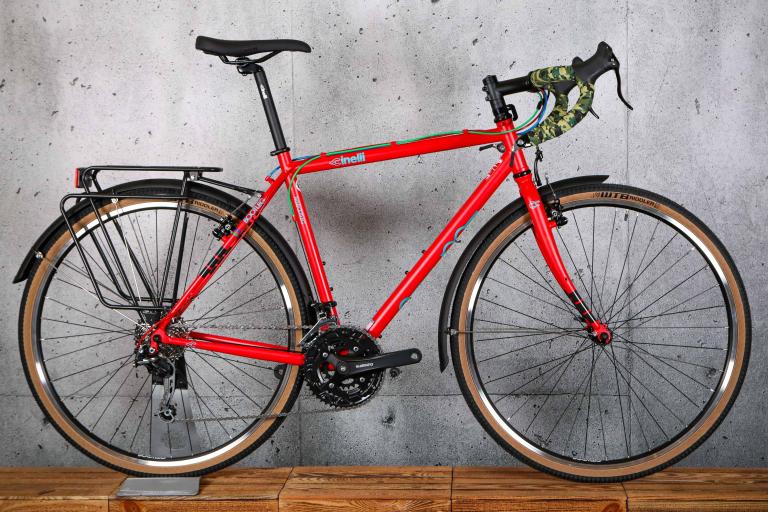
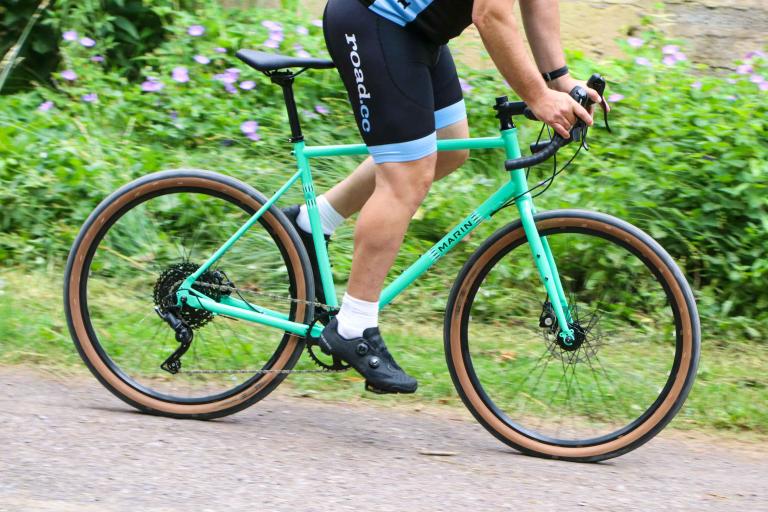
Add new comment
1 comments
Just picked up this bike (Fuji Touring) and really like it so far. The seat seemed to be pretty good, but I already had a Brooks B17. I changed the tires to Schwalbe Marathon Plus which I coincidently already had on order for my other bike (which this one will be replacing). However, I didn't feel like the original tires were terrible. But I only gave them a single ride just to see how they felt. Love the bike though. I've added a front Arkel rack which fit very well. I think the paint color looks better in person.
I also really like the shifting with the bar end shifters. My first time using this style of shifter. Doesn't take long to get used to it. The handle bars are different for me coming from flat style of my old hybrid. Pluses and minuses to both types from my experience so far.
Looking forward to doing some touring soon.